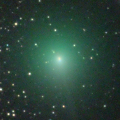
|
Now it is 9.2 mag (Sept. 26, Jose Guilherme de S. Aguiar). It stays bright as 8-9 mag until early November. It will be observable in excellent condition in the Southern Hemisphere. It locates very low in the Northern Hemisphere.
Date(TT) R.A. (2000) Decl. Delta r Elong. m1 Best Time(A, h)
Oct. 3 16 54.22 -26 15.0 1.422 1.355 65 8.8 19:05 ( 41, 16)
Oct. 10 17 21.36 -26 55.3 1.448 1.361 64 8.8 18:55 ( 39, 16)
|
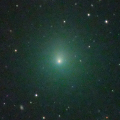
|
It brightened rapidly. Now it is very bright as 9.4 mag (Sept. 26, Michael Mattiazzo). It will brighten up to 9 mag from October to November, and will be observable in excellent condition.
Date(TT) R.A. (2000) Decl. Delta r Elong. m1 Best Time(A, h)
Oct. 3 4 26.62 -31 34.3 0.526 1.312 114 9.8 3:39 ( 0, 23)
Oct. 10 4 42.20 -28 35.2 0.484 1.289 116 9.5 3:27 ( 0, 26)
|

|
Now it is 13.2 mag (Sept. 20, Michael Mattiazzo). Although it is a tiny comet, it will approach to Sun down to 0.34 a.u. on Oct. 20, and it is expected to brighten up to 8.5 mag. It will be unobservable soon even in the Southern Hemisphere. In the Northern Hemisphere, it will appear in the morning sky at 10 mag in late October. Then it stasy observable while the comet will be fading rapidly. In the Southern Hemipshere, it will never be observable again.
Date(TT) R.A. (2000) Decl. Delta r Elong. m1 Best Time(A, h)
Oct. 3 12 31.99 -39 16.2 0.728 0.585 35 11.0 4:32 (298,-34)
Oct. 10 12 33.37 -26 48.5 0.665 0.450 21 9.6 4:38 (288,-23)
|
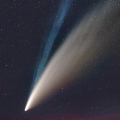
|
It approached to Sun down to 0.29 a.u. on July 3, and it brightened up to 0.6 mag (Alan Hale). Now it is fading. It has already faded down to 11.3 mag (Sept. 27, Mitsunori Tsumura). It will be unobservable soon. Then it will appear in the morning sky at 14 mag.
Date(TT) R.A. (2000) Decl. Delta r Elong. m1 Best Time(A, h)
Oct. 3 15 6.99 -12 41.1 2.665 1.977 38 11.1 19:05 ( 69, 7)
Oct. 10 15 14.70 -14 1.3 2.847 2.087 33 11.5 18:55 ( 69, 4)
|

|
Now it is 11.2 mag (Sept. 11, Carlos Labordena). It will be unobservable soon. Then it will appear in the morning sky at 13.5 mag.
Date(TT) R.A. (2000) Decl. Delta r Elong. m1 Best Time(A, h)
Oct. 3 14 56.80 -8 1.6 3.283 2.530 35 11.8 19:05 ( 74, 8)
Oct. 10 15 6.30 -10 3.0 3.401 2.595 30 12.0 18:55 ( 74, 5)
|
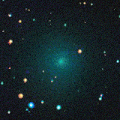
|
Now it is 12.5-13.0 mag (Sept. 19, Michael Jager). It is very bright as 11.3 mag visually (Sept. 12, Carlos Labordena). It stays observable in excellent condition in the Northern Hemipshere. It becomes observable in low sky from October to November also in the Southern Hemipshere.
Date(TT) R.A. (2000) Decl. Delta r Elong. m1 Best Time(A, h)
Oct. 3 21 17.16 56 18.2 0.780 1.502 114 12.7 20:22 (180, 70)
Oct. 10 20 26.14 43 42.6 0.900 1.553 109 13.2 19:07 (180, 82)
|
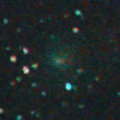
|
It brightened up to 14.2 mag in August (Aug. 18, Alan Hale). It approached to Sun down to 0.47 a.u. in September, and it was expected to brighten up to 11 mag. But actually, it was fainter than predicted. It is not observable after this.
Date(TT) R.A. (2000) Decl. Delta r Elong. m1 Best Time(A, h)
Oct. 3 11 27.31 -4 48.9 1.535 0.652 17 13.1 4:32 (273, -4)
Oct. 10 11 57.05 -5 40.0 1.674 0.768 16 14.0 4:38 (274, -4)
|

|
It brightened up to 13.5 mag in summer (July 31, Ken-ichi Kadota). Now it is not observable. It is expected to brighten up to 12 mag from autumn to winter. In the Southern Hemisphere, it will appear in the morning sky in December, then it stays observable in good condition. In the Northern Hemisphere, it will be observable in the extremely low sky only from November to December.
Date(TT) R.A. (2000) Decl. Delta r Elong. m1 Best Time(A, h)
Oct. 3 13 0.16 8 48.6 2.830 1.875 14 13.2 19:05 (105, -6)
Oct. 10 13 6.60 5 27.4 2.804 1.839 12 13.1 18:55 (104,-10)
|
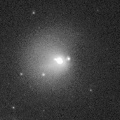
|
Now it is 14.1 mag (Sept. 22, S. Shurpakov).
Date(TT) R.A. (2000) Decl. Delta r Elong. m1 Best Time(A, h)
Oct. 3 2 47.74 27 34.3 5.018 5.828 140 13.2 2:01 ( 0, 83)
Oct. 10 2 45.06 27 31.4 4.959 5.829 147 13.2 1:31 ( 0, 83)
|
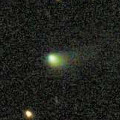
|
Now it is 15.3 mag (Sept. 12, SONEAR Observatory, Oliveira). It stays 13-14 mag from 2020 to 2021. It is not observable until January.
Date(TT) R.A. (2000) Decl. Delta r Elong. m1 Best Time(A, h)
Oct. 3 14 22.28 -6 33.5 3.828 2.965 26 14.4 19:05 ( 80, 2)
Oct. 10 14 32.42 -7 45.9 3.855 2.956 22 14.4 18:55 ( 81, 0)
|
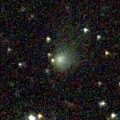
|
Now it is 15.0 mag (Sept. 20, Hiroshi Abe). It is expected to be observable at 5-6 mag for a long time from 2022 to 2023. In the Northern Hemisphere, it is not observable at the high light from 2022 summer to 2023 summer. In the Southern Hemisphere, it is only visible in the extremely low sky in summer in 2020. But it will be observable in good condition at the high light.
Date(TT) R.A. (2000) Decl. Delta r Elong. m1 Best Time(A, h)
Oct. 3 17 7.16 42 24.2 8.303 8.127 76 14.7 19:05 (116, 57)
Oct. 10 17 9.07 41 30.4 8.293 8.074 73 14.7 18:55 (114, 54)
|
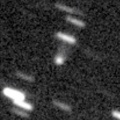
|
Now it is 16.1 mag (Sept. 3, Blue Mountains Observatory, Leura). It will brighten up to 13 mag in 2021. In the Southern Hemisphere, it stays observable at 15 mag until October. In the Northern Hemisphere, it is not observable until July in 2022.
Date(TT) R.A. (2000) Decl. Delta r Elong. m1 Best Time(A, h)
Oct. 3 14 28.03 -31 33.7 5.039 4.296 38 14.8 19:05 ( 59,-11)
Oct. 10 14 34.51 -32 32.1 5.058 4.263 33 14.8 18:55 ( 60,-14)
|

|
Now it is 14.2 mag (Sept. 15, Thomas Lehmann). It stays 14 mag until autumn. In the Southern Hemisphere, it will never be observable again.
Date(TT) R.A. (2000) Decl. Delta r Elong. m1 Best Time(A, h)
Oct. 3 14 33.02 68 0.2 4.539 4.384 74 14.8 19:05 (153, 36)
Oct. 10 14 44.37 66 33.2 4.572 4.428 75 14.9 18:55 (151, 35)
|
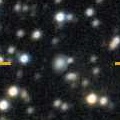
|
Now it is 15 mag (Sept. 11, Giuseppe Pappa). It will brighten up to 12 mag in winter in 2022. In the Northern Hemisphere, it stays observable in good condition for a long time. In the Southern Hemisphere, it is not observable until 2021 November.
Date(TT) R.A. (2000) Decl. Delta r Elong. m1 Best Time(A, h)
Oct. 3 0 27.14 65 51.3 4.846 5.390 118 14.9 23:36 (180, 59)
Oct. 10 0 20.56 65 48.9 4.772 5.347 120 14.9 23:02 (180, 59)
|
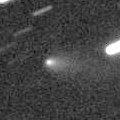
|
First return of a new periodic comet which brightened up to 13 mag in 2009. Now it is 15.9 mag (Sept. 21, Michael Jager). It is expected to brighten up to 12 mag and to be observable in excellent condition in winter.
Date(TT) R.A. (2000) Decl. Delta r Elong. m1 Best Time(A, h)
Oct. 3 3 40.63 -4 52.7 0.749 1.609 133 15.5 2:53 ( 0, 50)
Oct. 10 3 49.32 -6 20.3 0.685 1.567 136 15.1 2:34 ( 0, 49)
|
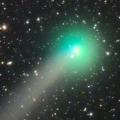
|
It brightened up to 6.0 mag in June (June 13, Marco Goiato). Now it is fading. It has already faded down to 13.0 mag (Sept. 21, Seiichi Yoshida). It stays observable in good condition for a long time after this.
Date(TT) R.A. (2000) Decl. Delta r Elong. m1 Best Time(A, h)
Oct. 3 16 29.90 23 1.7 2.199 1.958 62 15.1 19:05 ( 89, 44)
Oct. 10 16 45.58 23 1.8 2.314 2.047 62 15.6 18:55 ( 89, 44)
|
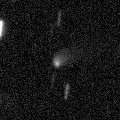
|
Now it is 15.0 mag (Aug. 28, Chris Wyatt). It stays 14-15 mag until 2021. In the Southern Hemisphere, it stays observable in good condition for a long time. In the Northern Hemisphere, it is not observable until June in 2021.
Date(TT) R.A. (2000) Decl. Delta r Elong. m1 Best Time(A, h)
Oct. 3 17 20.98 -71 39.3 4.613 4.553 80 15.2 19:05 ( 12,-20)
Oct. 10 17 38.77 -70 37.0 4.656 4.536 76 15.2 18:55 ( 12,-19)
|

|
Now it is 15.4 mag (Sept. 21, Slooh.com Chile Observatory, La Dehesa). It will brighten up to 13.5 mag in spring in 2021. In the Southern Hemisphere, it stays observable in good condition for a long time. In the Northern Hemisphere, it is not observable until spring in 2021.
Date(TT) R.A. (2000) Decl. Delta r Elong. m1 Best Time(A, h)
Oct. 3 17 16.55 -53 40.6 3.957 3.824 75 15.3 19:05 ( 22, -5)
Oct. 10 17 14.50 -52 14.4 4.044 3.794 68 15.3 18:55 ( 25, -5)
|
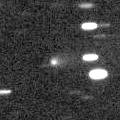
|
Now it is 15.5 mag (Sept. 19, M. Jaeger, E. Prosperi, S. Prosperi). It stays 15.5 mag from summer to winter, and observable in good condition. It locates somewhat low in the Southern Hemisphere.
Date(TT) R.A. (2000) Decl. Delta r Elong. m1 Best Time(A, h)
Oct. 3 7 49.27 18 24.7 2.076 2.044 74 15.3 4:32 (287, 53)
Oct. 10 8 0.23 18 8.5 2.032 2.077 78 15.3 4:38 (293, 57)
|
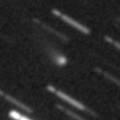
|
Now it is 15.3 mag (Sept. 9, M. Jaeger, E. Prosperi, S. Prosperi). It will stay at 14 mag for a long time from 2021 to 2022. In the Northern Hemisphere, it stays observable in good condition while brightening gradually. In the Southern Hemisphere, it stays locating low for a long time.
Date(TT) R.A. (2000) Decl. Delta r Elong. m1 Best Time(A, h)
Oct. 3 17 27.89 16 38.0 6.011 5.829 74 15.6 19:05 ( 70, 53)
Oct. 10 17 28.57 15 21.5 6.076 5.802 69 15.6 18:55 ( 72, 48)
|
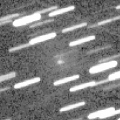
|
Now it is 15.0-15.5 mag (Sept. 19, Michael Jager). It will approach to Sun down to 0.4 a.u. on Dec. 13, and it is expected to brighten up to 9.5 mag. It stays observable while the comet is brightening until late November when it brightens up to 10 mag.
Date(TT) R.A. (2000) Decl. Delta r Elong. m1 Best Time(A, h)
Oct. 3 8 24.61 5 14.4 1.748 1.581 63 16.2 4:32 (294, 38)
Oct. 10 8 47.77 2 53.1 1.589 1.463 64 15.7 4:38 (298, 38)
|

|
It was expected to brighten very rapidly, and brighten up to 14.5 mag from August to September. However, its current brightness is very uncertain. It could not be detected as fainter than 18.0 mag on June 30 (Charles S. Morris), and fainter than 15.7 mag on July 13 (Sandor Szabo). However, Giuseppe Pappa reported as 14 mag on July 10, and Thomas Lehmann reported it is bright as 15.2 mag on July 12. In the Northern Hemisphere, it stays observable for a long time. In the Southern Hemisphere, it is not observable until late October.
Date(TT) R.A. (2000) Decl. Delta r Elong. m1 Best Time(A, h)
Oct. 3 10 49.49 18 11.8 1.788 1.117 34 15.7 4:32 (259, 16)
Oct. 10 10 50.31 13 44.6 1.789 1.185 38 16.0 4:38 (267, 20)
|
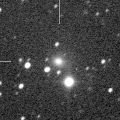
|
It brightened up to 13.5 mag in winter (Dec. 6, Chris Wyatt). Now it is fading slowly. Now it is 14.6 mag (Sept. 20, Katsumi Yoshimoto). In the Southern Hemisphere, it stays observable for a long time. It locates somewhat low in the Northern Hemisphere. Taras Prystavski found its fragmentation on Sept. 12.
Date(TT) R.A. (2000) Decl. Delta r Elong. m1 Best Time(A, h)
Oct. 3 2 36.61 -38 5.2 3.701 4.407 129 15.8 1:50 ( 0, 17)
Oct. 10 2 26.95 -37 54.8 3.722 4.445 131 15.9 1:13 ( 0, 17)
|
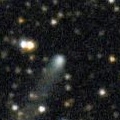
|
Now it is 15.7 mag (Sept. 11, Thomas Lehmann). It stays 15-16 mag for a long time until 2021.
Date(TT) R.A. (2000) Decl. Delta r Elong. m1 Best Time(A, h)
Oct. 3 18 26.70 19 22.2 4.467 4.560 88 15.8 19:05 ( 57, 65)
Oct. 10 18 25.48 19 11.8 4.574 4.572 83 15.9 18:55 ( 63, 62)
|
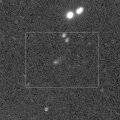
|
Now it is 15.1 mag (Sept. 22, S. Shurpakov). It will brighten up to 14.5 mag from spring to summer in 2021. In the Southern Hemisphere, it stays observable in excellent condition for a long time. In the Northern Hemisphere, it is observable in good condition in 2020, however, it will be unobservable in 2021.
Date(TT) R.A. (2000) Decl. Delta r Elong. m1 Best Time(A, h)
Oct. 3 21 40.84 -19 19.5 2.624 3.365 130 15.9 20:50 ( 0, 36)
Oct. 10 21 33.16 -21 28.2 2.689 3.323 121 15.9 20:15 ( 0, 33)
|

|
Now it is 15.3 mag (Aug. 28, Chris Wyatt). It brightens up to 16 mag from summer to winter. In the Southern Hemisphere, it is observable in excellent condition. In the Northern Hemisphere, it is not observable until late October.
Date(TT) R.A. (2000) Decl. Delta r Elong. m1 Best Time(A, h)
Oct. 3 20 48.76 -57 42.4 0.894 1.489 103 15.9 20:00 ( 0, -2)
Oct. 10 20 55.70 -53 48.0 0.885 1.452 100 15.9 19:39 ( 0, 2)
|
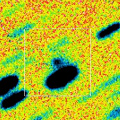
|
Now it is 17.2 mag (Aug. 17, P. Camilleri, H. Williams). It brightens up to 15 mag in winter. But it is not observable at high light. In the Southern Hemisphere, it stays observable in good condition until autumn when the comet will brighten up to 16 mag. It stays locating very low in the Northern Hemisphere.
Date(TT) R.A. (2000) Decl. Delta r Elong. m1 Best Time(A, h)
Oct. 3 18 28.56 -32 10.0 2.179 2.337 86 16.1 19:05 ( 19, 20)
Oct. 10 18 38.46 -31 2.2 2.240 2.314 81 16.0 18:55 ( 21, 21)
|

|
Now it is 15.7 mag (Sept. 23, ATLAS-MLO, Mauna Loa). It is observable at 16 mag in excellent condition from October to November.
Date(TT) R.A. (2000) Decl. Delta r Elong. m1 Best Time(A, h)
Oct. 3 23 45.42 -33 1.6 0.511 1.435 141 16.1 22:54 ( 0, 22)
Oct. 10 23 38.78 -29 45.5 0.494 1.407 138 16.0 22:20 ( 0, 26)
|
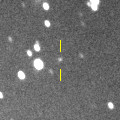
|
Now it is 15.9 mag (Apr. 24, J. Drummond). It is expected to brighten up to 13 mag in 2022. In 2020, it is observable in excellent condition in the Southern Hemisphere. In the Northern Hemisphere, it is observable from autumn to winter, but it locating extremely low.
Date(TT) R.A. (2000) Decl. Delta r Elong. m1 Best Time(A, h)
Oct. 3 8 15.65 -31 5.5 6.805 6.477 66 16.3 4:32 (323, 12)
Oct. 10 8 19.43 -31 52.4 6.708 6.438 70 16.2 4:38 (328, 15)
|

|
Now it is 15.9 mag (Sept. 16, J. Drummond). It is observable at 15-16 mag in 2020. It is observable in excellent condition in the Southern Hemisphere. It locates somewhat low in the Northern Hemisphere.
Date(TT) R.A. (2000) Decl. Delta r Elong. m1 Best Time(A, h)
Oct. 3 17 59.79 -24 51.8 7.031 6.928 79 16.2 19:05 ( 28, 24)
Oct. 10 17 59.21 -24 32.2 7.172 6.946 72 16.3 18:55 ( 33, 23)
|
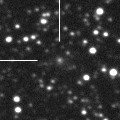
|
Now it is 15.8 mag (Sept. 5, Thomas Lehmann). It stays observable until December when it becomes fainter than 18 mag.
Date(TT) R.A. (2000) Decl. Delta r Elong. m1 Best Time(A, h)
Oct. 3 19 49.46 -12 36.3 1.615 2.132 106 16.5 19:05 ( 1, 42)
Oct. 10 19 59.50 -13 5.4 1.701 2.148 102 16.6 18:55 ( 4, 42)
|
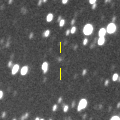
|
Now it is 16.5 mag (Sept. 11, Giuseppe Pappa). It is observable at 16.5-17 mag from 2020 to 2021. In the Southern Hemisphere, it is not observable until summer in 2021.
Date(TT) R.A. (2000) Decl. Delta r Elong. m1 Best Time(A, h)
Oct. 3 22 57.75 71 41.6 5.617 6.040 110 16.6 22:06 (180, 53)
Oct. 10 22 42.87 70 18.6 5.578 6.032 112 16.5 21:24 (180, 55)
|
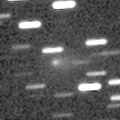
|
Now it is 15.0-15.5 mag (Sept. 19, Michael Jager). It will be fading after this, and will be fainter than 18 mag in November. It is observable in good condition in the Northern Hemisphere. It locates low in the Southern Hemisphere.
Date(TT) R.A. (2000) Decl. Delta r Elong. m1 Best Time(A, h)
Oct. 3 8 6.07 21 7.0 1.357 1.396 70 16.6 4:32 (280, 51)
Oct. 10 8 24.04 20 25.1 1.350 1.432 73 16.8 4:38 (284, 54)
|
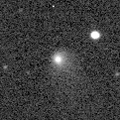
|
It brightened up to 13.8 mag in autumn in 2019 (Sept. 3, Chris Wyatt). Now it is fading slowly. Now it is 15.2 mag (Sept. 22, S. Shurpakov). In 2020, it stays observable in good condition while the comet will be fading from 16 to 17 mag.
Date(TT) R.A. (2000) Decl. Delta r Elong. m1 Best Time(A, h)
Oct. 3 0 4.05 1 49.6 5.376 6.367 171 16.7 23:13 ( 0, 57)
Oct. 10 0 0.03 1 52.6 5.444 6.409 163 16.7 22:42 ( 0, 57)
|
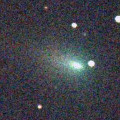
|
Recovered from SWAN images after 24-year blank. It brightened up to 10.2 mag in spring (May 31, Marco Goiato). Now it is fading very rapidly. It has already faded down to 18.0 mag (Sept. 12, M. Jaeger, E. Prosperi, S. Prosperi).
Date(TT) R.A. (2000) Decl. Delta r Elong. m1 Best Time(A, h)
Oct. 3 7 8.78 8 26.3 1.859 1.996 82 16.7 4:32 (310, 54)
Oct. 10 7 16.08 7 43.0 1.832 2.047 87 17.0 4:38 (320, 57)
|
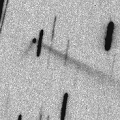
|
Now it is 17.5 mag (Aug. 15, Toshihiko Ikemura, Hirohisa Sato). Main-belt asteroid. But it showed a straight tail like a comet in 2019. In 2020, it brightens up to 16.5 mag and stays observable in good condition from September to October.
Date(TT) R.A. (2000) Decl. Delta r Elong. m1 Best Time(A, h)
Oct. 3 0 14.23 -0 30.0 1.296 2.292 172 16.7 23:23 ( 0, 54)
Oct. 10 0 9.08 -2 26.2 1.331 2.308 163 16.9 22:51 ( 0, 53)
|
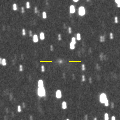
|
Now it is 16.8 mag (Sept. 14, Thomas Lehmann). It stays 16.5 mag until October, and observable in good condition.
Date(TT) R.A. (2000) Decl. Delta r Elong. m1 Best Time(A, h)
Oct. 3 20 28.02 5 28.4 1.489 2.149 118 16.7 19:39 ( 0, 60)
Oct. 10 20 35.15 4 6.9 1.551 2.154 113 16.8 19:18 ( 0, 59)
|
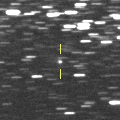
|
Now it is 16.6 mag (Sept. 19, D. Buczynski). It is observable at 16.5-17 mag from spring in 2020 to summer in 2021.
Date(TT) R.A. (2000) Decl. Delta r Elong. m1 Best Time(A, h)
Oct. 3 17 16.19 3 26.6 4.881 4.639 70 16.9 19:05 ( 58, 42)
Oct. 10 17 15.99 2 11.2 4.988 4.637 63 17.0 18:55 ( 61, 38)
|

|
Now it is 18.6 mag (Aug. 6, Palomar Mountain--ZTF). It will approach to Sun down to 0.14 a.u. on Dec. 7, and will brighten up to 11 mag. But it is not observable at the high light. It is observable until November when it brightens up to 16 mag.
Date(TT) R.A. (2000) Decl. Delta r Elong. m1 Best Time(A, h)
Oct. 3 8 0.11 26 0.9 1.292 1.386 73 17.2 4:32 (273, 55)
Oct. 10 8 25.04 24 12.6 1.143 1.296 74 17.0 4:38 (278, 55)
|
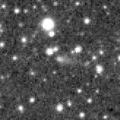
|
First return of a new periodic comet which brightened up to 17.5 mag in 2012. Now it is 17.5 mag (Aug. 15, Toshihiko Ikemura, Hirohisa Sato). It stays observable at 17 mag in good condition from summer to winter. It locates somewhat low in the Southern Hemisphere.
Date(TT) R.A. (2000) Decl. Delta r Elong. m1 Best Time(A, h)
Oct. 3 5 13.26 33 37.1 1.873 2.400 109 17.1 4:26 ( 0, 89)
Oct. 10 5 17.13 34 27.5 1.814 2.416 115 17.0 4:02 ( 0, 89)
|
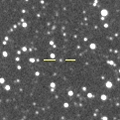
|
Now it is 16.6 mag (Sept. 19, M. Jaeger, E. Prosperi, S. Prosperi). It stays at 17 mag from 2020 to 2021.
Date(TT) R.A. (2000) Decl. Delta r Elong. m1 Best Time(A, h)
Oct. 3 18 55.95 30 41.9 8.702 8.866 96 17.1 19:05 ( 75, 77)
Oct. 10 18 55.52 30 25.4 8.772 8.862 91 17.1 18:55 ( 80, 73)
|
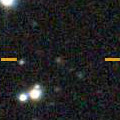
|
Now it is 17.4 mag (Sept. 18, E. Bryssinck). It will brighten up to 13.5 mag from winter to spring in 2021. In the Northern Hemisphere, it stays observable in excellent condition. In the Southern Hemisphere, it stays extremely low until 2021 spring.
Date(TT) R.A. (2000) Decl. Delta r Elong. m1 Best Time(A, h)
Oct. 3 0 4.77 50 46.6 1.791 2.577 132 17.4 23:14 (180, 74)
Oct. 10 23 55.71 50 48.6 1.707 2.503 133 17.1 22:37 (180, 74)
|

|
Now it is 17.4 mag (Sept. 16, Blue Mountains Observatory, Leura). It will brighten up to 15.5 mag in early 2021. In 2020, it stays observable at 17 mag until November in the Southern Hemisphere. In the Northern Hemisphere, it stays unobservable until 2021 June.
Date(TT) R.A. (2000) Decl. Delta r Elong. m1 Best Time(A, h)
Oct. 3 15 28.67 -30 54.6 2.947 2.405 48 17.4 19:05 ( 52, -1)
Oct. 10 15 42.22 -31 19.4 2.953 2.351 44 17.3 18:55 ( 52, -2)
|
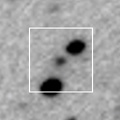
|
Now it is 17.6 mag (Sept. 21, A. Diepvens). It will approach to Earth down to 0.5 a.u. in November, and brighten up to 17 mag. It is observable in excellent condition.
Date(TT) R.A. (2000) Decl. Delta r Elong. m1 Best Time(A, h)
Oct. 3 23 30.47 31 5.9 0.563 1.510 148 17.5 22:40 ( 0, 86)
Oct. 10 23 31.51 29 43.0 0.536 1.483 148 17.4 22:14 ( 0, 85)
|
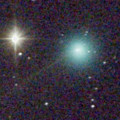
|
It passed the perihelion on June 25, and brightened up to 7.3 mag (June 30, Chris Wyatt). Now it is fading. It has already faded down to 15.7 mag (Sept. 7, Blue Mountains Observatory, Leura). In the Southern Hemisphere, it stays observable in good condition in the evening sky while the comet will be fading. It locates very low in the Northern Hemisphere.
Date(TT) R.A. (2000) Decl. Delta r Elong. m1 Best Time(A, h)
Oct. 3 17 53.44 -30 11.4 1.696 1.792 78 17.4 19:05 ( 27, 19)
Oct. 10 18 10.68 -29 35.8 1.853 1.873 75 17.9 18:55 ( 28, 19)
|

|
It brightened up to 13.2 mag from spring to autumn in 2019 (June 30, Thomas Lehmann). Now it is fading slowly. It has already faded down to 16.2 mag (Sept. 11, Giuseppe Pappa). In the Southern Hemisphere, it stays observable for a long time. In the Northern Hemisphere, it stays low for a long time.
Date(TT) R.A. (2000) Decl. Delta r Elong. m1 Best Time(A, h)
Oct. 3 22 30.92 -28 27.9 4.022 4.789 135 17.4 21:40 ( 0, 27)
Oct. 10 22 25.25 -27 42.9 4.141 4.830 128 17.5 21:07 ( 0, 27)
|
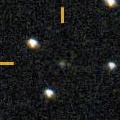
|
Now it is 17.6 mag (Sept. 20, A. Diepvens). It is observable at 17-18 mag for a long time from late 2019 to early 2021. It will fade out before it passes the perihelion.
Date(TT) R.A. (2000) Decl. Delta r Elong. m1 Best Time(A, h)
Oct. 3 5 59.85 16 26.3 4.316 4.596 99 17.5 4:32 (331, 69)
Oct. 10 6 1.51 16 28.8 4.202 4.585 106 17.5 4:38 (353, 71)
|

|
It brightened up to 7.7 mag in June in 2018 (June 19, Juan Jose Gonzalez). Now it is fading. It has already faded down to 18.7 mag (Sept. 20, ATLAS-MLO, Mauna Loa). In the Southern Hemisphere, it stays observable for a long time. It will be observable in good condition after this also in the Northern Hemisphere.
Date(TT) R.A. (2000) Decl. Delta r Elong. m1 Best Time(A, h)
Oct. 3 6 39.92 -11 52.0 7.708 7.744 88 17.5 4:32 (334, 39)
Oct. 10 6 39.36 -12 7.7 7.660 7.796 94 17.5 4:38 (345, 42)
|
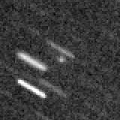
|
Now it is 18.1 mag (Sept. 20, Katsumi Yoshimoto). It will approach to Earth down to 0.46 a.u. in 2021 April, and it is expected to brighten up to 12.5 mag and to be observable in excellent condition.
Date(TT) R.A. (2000) Decl. Delta r Elong. m1 Best Time(A, h)
Oct. 3 1 42.73 -11 22.0 1.515 2.469 157 17.8 0:57 ( 0, 44)
Oct. 10 1 15.02 -14 18.5 1.428 2.387 158 17.6 0:02 ( 0, 41)
|
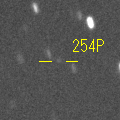
|
Now it is 17.9 mag (Sept. 23, ATLAS-MLO, Mauna Loa). It stays 17.5 mag until November. It is observable in excellent condition in the Southern Hemisphere. It locates very low in the Northern Hemisphere.
Date(TT) R.A. (2000) Decl. Delta r Elong. m1 Best Time(A, h)
Oct. 3 23 6.17 -35 55.9 2.350 3.137 134 17.6 22:16 ( 0, 19)
Oct. 10 23 3.83 -36 15.2 2.412 3.137 128 17.6 21:46 ( 0, 19)
|

|
It will brighten very rapidly, and will brighten up to 11 mag from December to January. It stays observable for a long time. In the Southern Hemipshere, it locates low until the high light.
Date(TT) R.A. (2000) Decl. Delta r Elong. m1 Best Time(A, h)
Oct. 3 17 25.46 -9 55.5 1.313 1.380 71 18.0 19:05 ( 45, 33)
Oct. 10 17 37.00 -10 11.4 1.295 1.305 67 17.6 18:55 ( 46, 32)
|
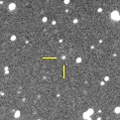
|
Now it is 17.2 mag (Sept. 13, E. Bryssinck). It was observed at 17 mag in 2019. In 2020, it is observable at 17.5 mag in good condition from summer to autumn.
Date(TT) R.A. (2000) Decl. Delta r Elong. m1 Best Time(A, h)
Oct. 3 0 40.87 -7 30.0 2.800 3.785 168 17.7 23:50 ( 0, 48)
Oct. 10 0 36.42 -7 43.9 2.822 3.793 164 17.7 23:18 ( 0, 47)
|

|
New comet discovered in the images of SOHO spacecraft. It approached to Sun down to 0.09 a.u. on Aug. 8, and it brightened up to 3 mag. It will appear in the morning sky in October. But it must be fainter than 18 mag.
Date(TT) R.A. (2000) Decl. Delta r Elong. m1 Best Time(A, h)
Oct. 3 10 48.06 -1 36.7 2.346 1.526 27 17.7 4:32 (276, 5)
Oct. 10 10 56.13 -2 36.1 2.424 1.659 31 18.1 4:38 (280, 10)
|
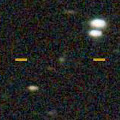
|
Now it is 17.3 mag (Sept. 16, Blue Mountains Observatory, Leura). It became brighter than orignally predicted. It will be fading after this, and will be fainter than 18 mag in October. It locates extremely low in the Northern Hemisphere.
Date(TT) R.A. (2000) Decl. Delta r Elong. m1 Best Time(A, h)
Oct. 3 15 46.49 -24 58.2 2.588 2.093 50 17.7 19:05 ( 53, 6)
Oct. 10 16 3.14 -25 46.0 2.646 2.098 47 17.8 18:55 ( 53, 5)
|

|
It stays observable at 17 mag for a long time until 2027. In the Southern Hemipshere, it stays observable in good condition for a long time. It is not observable in the Northern Hemipsphere.
Date(TT) R.A. (2000) Decl. Delta r Elong. m1 Best Time(A, h)
Oct. 3 10 2.14 -46 31.1 12.499 11.940 54 17.8 4:32 (318,-13)
Oct. 10 10 3.80 -47 7.0 12.459 11.922 55 17.7 4:38 (322,-10)
|
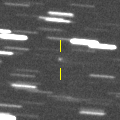
|
Now it is 17.4 mag (Sept. 5, ATLAS-MLO, Mauna Loa). It stays observable at 17.5-18 mag in good condition until winter.
Date(TT) R.A. (2000) Decl. Delta r Elong. m1 Best Time(A, h)
Oct. 3 7 6.94 17 1.3 1.839 1.999 83 17.8 4:32 (300, 60)
Oct. 10 7 17.72 17 2.5 1.786 2.019 88 17.8 4:38 (308, 64)
|

|
Now it is 17.7 mag (Sept. 14, Slooh.com Chile Observatory, La Dehesa). It will brighten up to 16.5 mag in 2021 summer. In the Southern Hemisphere, it stays observable for a while. In the Northern Hemisphere, it is not observable until 2021 February.
Date(TT) R.A. (2000) Decl. Delta r Elong. m1 Best Time(A, h)
Oct. 3 15 13.05 -43 48.7 6.053 5.504 52 17.8 19:05 ( 44,-11)
Oct. 10 15 20.05 -43 13.2 6.105 5.480 47 17.8 18:55 ( 45,-13)
|
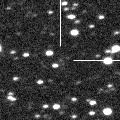
|
Now it is 17.2 mag (Sept. 12, D. Buczynski). It stays 15-16 mag for a long time from 2021 spring to 2022 spring. It stays observable for a long time in the Northern Hemisphere. In the Southern Hemipsphere, it is not observable until the end of 2021.
Date(TT) R.A. (2000) Decl. Delta r Elong. m1 Best Time(A, h)
Oct. 3 19 52.78 52 48.0 3.933 4.296 104 18.0 19:05 (179, 72)
Oct. 10 19 44.31 51 41.4 3.934 4.251 101 17.9 18:55 (165, 73)
|
|
![]()
 C/2020 F3 ( NEOWISE )
C/2020 F3 ( NEOWISE ) C/2017 T2 ( PanSTARRS )
C/2017 T2 ( PanSTARRS ) C/2020 Q1 ( Borisov )
C/2020 Q1 ( Borisov ) C/2020 K8 ( Catalina-ATLAS )
C/2020 K8 ( Catalina-ATLAS ) C/2019 N1 ( ATLAS )
C/2019 N1 ( ATLAS ) 29P/Schwassmann-Wachmann 1
29P/Schwassmann-Wachmann 1 246P/NEAT
246P/NEAT C/2017 K2 ( PanSTARRS )
C/2017 K2 ( PanSTARRS ) C/2019 F1 ( ATLAS-Africano )
C/2019 F1 ( ATLAS-Africano ) C/2018 N2 ( ASASSN )
C/2018 N2 ( ASASSN ) C/2019 L3 ( ATLAS )
C/2019 L3 ( ATLAS ) P/2020 P2 ( Boattini )
P/2020 P2 ( Boattini ) C/2019 U6 ( Lemmon )
C/2019 U6 ( Lemmon ) C/2020 F5 ( MASTER )
C/2020 F5 ( MASTER ) C/2020 J1 ( SONEAR )
C/2020 J1 ( SONEAR ) 84P/Giclas
84P/Giclas C/2018 U1 ( Lemmon )
C/2018 U1 ( Lemmon ) C/2020 S3 ( Erasmus )
C/2020 S3 ( Erasmus ) C/2020 H4 ( Leonard )
C/2020 H4 ( Leonard ) C/2018 F4 ( PanSTARRS )
C/2018 F4 ( PanSTARRS ) C/2019 K7 ( Smith )
C/2019 K7 ( Smith ) C/2019 T2 ( Lemmon )
C/2019 T2 ( Lemmon ) 162P/Siding Spring
162P/Siding Spring 17P/Holmes
17P/Holmes 156P/Russell-LINEAR
156P/Russell-LINEAR C/2019 T4 ( ATLAS )
C/2019 T4 ( ATLAS ) C/2017 U7 ( PanSTARRS )
C/2017 U7 ( PanSTARRS ) 115P/Maury
115P/Maury C/2019 T3 ( ATLAS )
C/2019 T3 ( ATLAS ) 304P/Ory
304P/Ory C/2017 B3 ( LINEAR )
C/2017 B3 ( LINEAR ) 58P/Jackson-Neujmin
58P/Jackson-Neujmin (6478) Gault
(6478) Gault 257P/Catalina
257P/Catalina C/2017 Y2 ( PanSTARRS )
C/2017 Y2 ( PanSTARRS ) (3200) Phaethon
(3200) Phaethon P/2020 M2 ( Lemmon )
P/2020 M2 ( Lemmon ) C/2019 O3 ( Palomar )
C/2019 O3 ( Palomar ) C/2020 N1 ( PanSTARRS )
C/2020 N1 ( PanSTARRS ) 28P/Neujmin 1
28P/Neujmin 1 11P/Tempel-Swift-LINEAR
11P/Tempel-Swift-LINEAR 2P/Encke
2P/Encke C/2018 A6 ( Gibbs )
C/2018 A6 ( Gibbs ) 173P/Mueller 5
173P/Mueller 5 C/2016 M1 ( PanSTARRS )
C/2016 M1 ( PanSTARRS ) C/2020 R4 ( ATLAS )
C/2020 R4 ( ATLAS ) 254P/McNaught
254P/McNaught 141P/Machholz 2
141P/Machholz 2 215P/NEAT
215P/NEAT C/2020 P4 ( SOHO )
C/2020 P4 ( SOHO ) 278P/McNaught
278P/McNaught C/2019 E3 ( ATLAS )
C/2019 E3 ( ATLAS ) 178P/Hug-Bell
178P/Hug-Bell C/2020 O2 ( Amaral )
C/2020 O2 ( Amaral ) C/2020 M5 ( ATLAS )
C/2020 M5 ( ATLAS )![]()














































